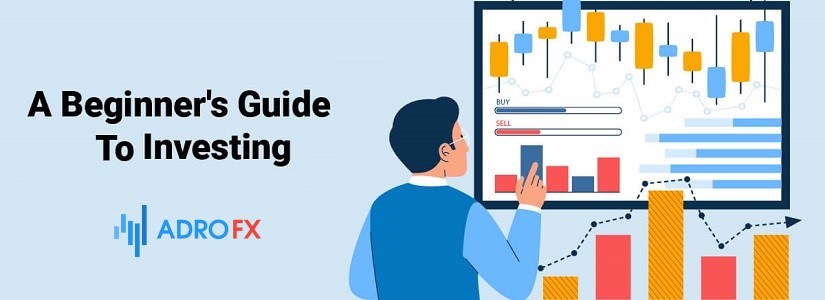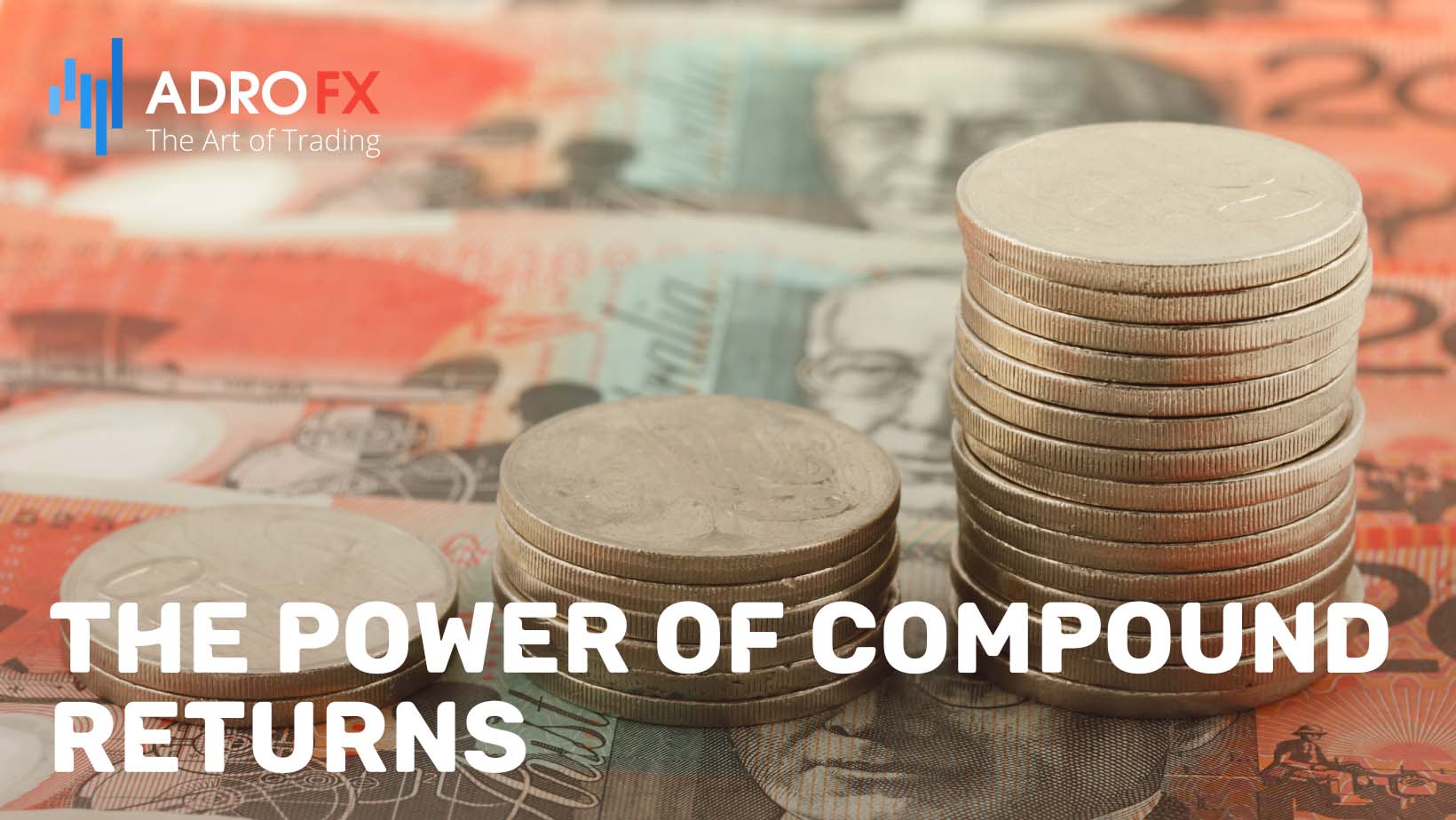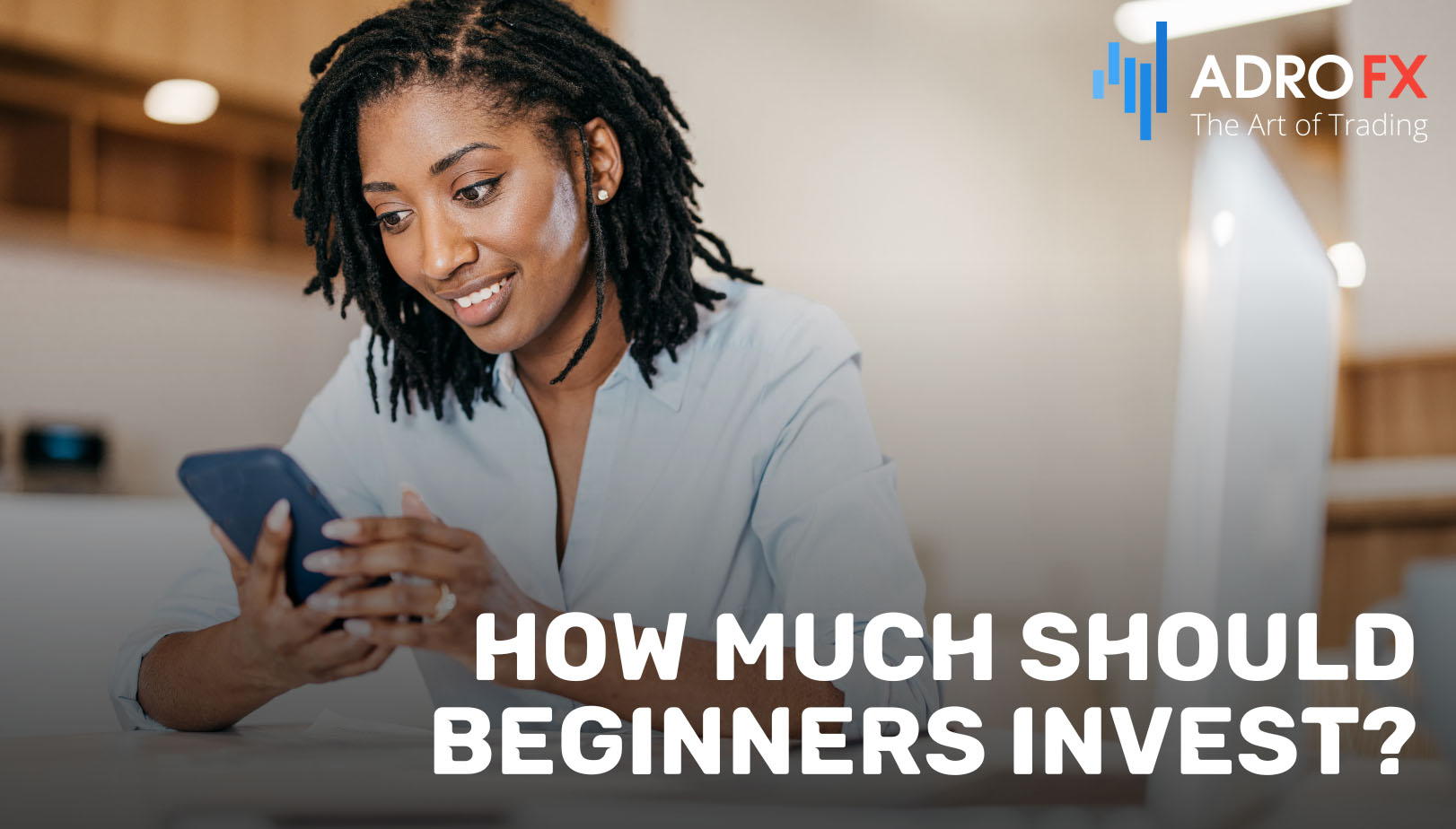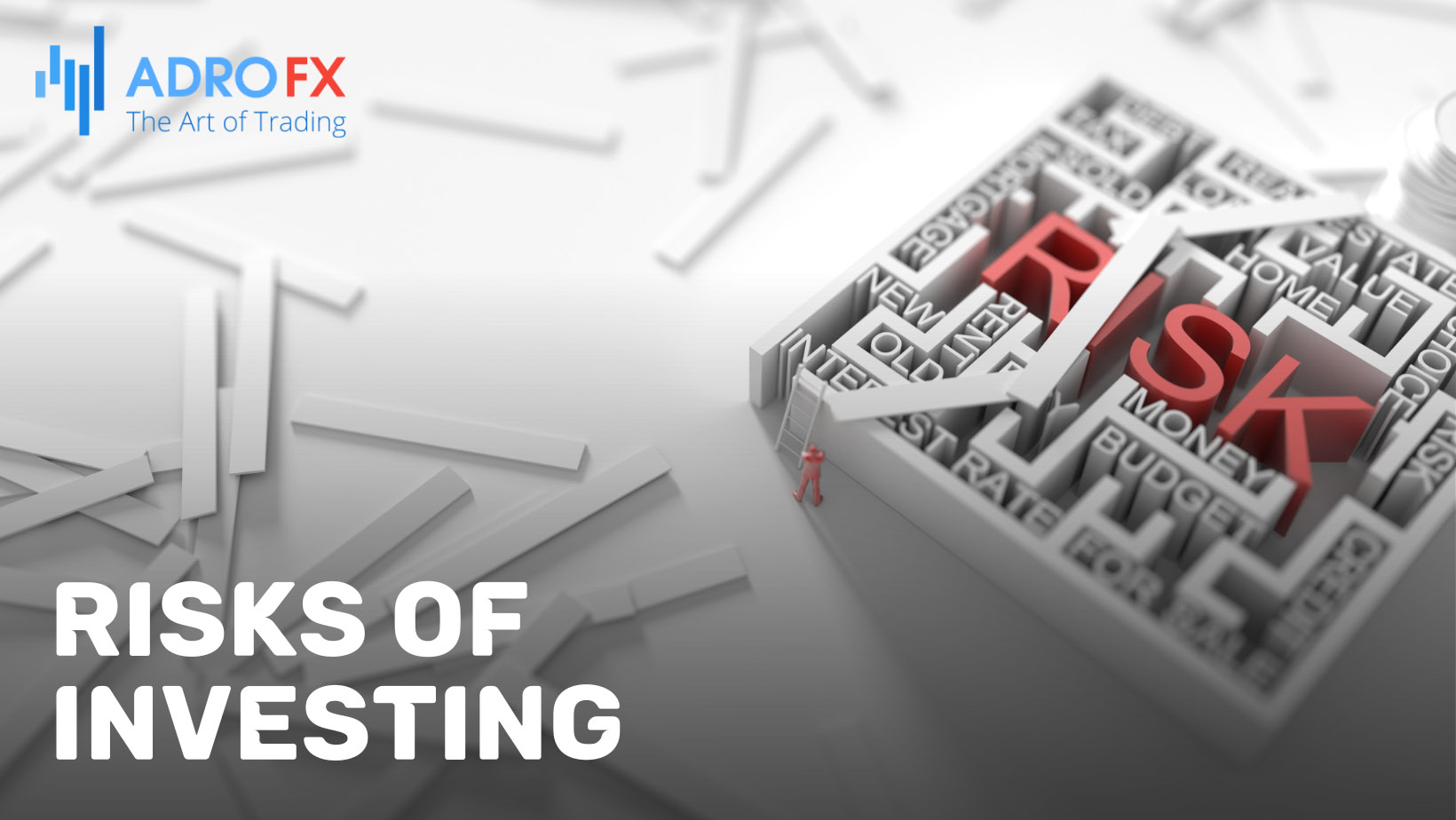The Ultimate Beginner's Guide to Investing

There are a lot of myths surrounding investing. Some say that it is too complicated for a beginner, and you can't figure it out on your own. Others portray the image of a successful investor who travels all the time and does almost nothing. So, let's find out how things really are.
What Is Investing?
Investment is the long-term investment of funds and finances in a variety of instruments in order to generate income in the future. Furthermore, there are two types of investments in relation to objects of investment. The first type is investment in the real sector (real investments). However, the subject of today's article is related to the second type of investment - financial investments, not investments in the real sector. Let's dot all the i's and cross the t's to define with you what we mean by financial investments.
Financial investments are long-term investments of finances in securities, shares, bonds, mutual funds, precious metals, and other derivative instruments of securities.
Financial investments are also called portfolio investments. Portfolio investing means that an investor can invest in several financial instruments at once, thus forming a specific "portfolio of investments. A portfolio helps an investor diversify his risks, that is, even if there is a completely failed investment, the investor is able to offset his losses at the expense of more successful instruments from his portfolio.
Structure Of The Financial Investment Market
Before considering investing and financial instruments, it is necessary to understand how this market is structured. The structure of the financial market can be divided into three main segments:
- Stock market
- Debt market
- Foreign exchange market
The stock market is where shares of various issuers and other derivatives that give the right of ownership are traded. The debt market, also called credit market, is characterized by investments in debt instruments, such as government and corporate bonds. It is generally believed that the debt market is the most risk-free and conservative, but low-yielding way of investing, the yield on which will not exceed, and often coincide with the yield on a bank deposit. Here much depends on whose bonds you invest in and at what point. The third and extreme segment in this classification is the foreign exchange market, where it is possible to purchase contracts (both options and futures) for the purchase of currency in the forex market.
In addition, in recent years, a new market is beginning to take shape - the cryptocurrency market. Due to the popularity and rise in the value of Bitcoin, this market has expanded significantly in 2016-2017 and more and more types of cryptocurrencies are coming to the market.
Why Should You Invest Funds?
The question of why to invest in various financial assets often arises in people who are just beginning to become interested in ways of making passive income. One could say that this skill belongs to the obligatory skills of a person who wants to come to success, just as one used to need to know how to speak French or ride a horse.
Another thing is that the vast majority of people spend almost all of their funds on daily expenses - food, clothes, rent, and often credit as well. This is a kind of dependence on the bank, the state, and the place of work. And professionalism in one area or another is not yet a guarantee of good returns.
Everyone in the modern world just needs to learn how to manage their finances and how to multiply them. Almost everyone periodically thinks about saving and achieving financial freedom, providing a peaceful old age, and investing in the future of their children.
A certain role is played by the state, allocating pensions to elderly people from the pension fund, in which accumulated amounts of deductions from wages for a lifetime. However, the size of pensions is known to all - it is simply impossible to provide a decent old age for them. Many pensioners who have worked all their lives live on the brink of poverty.
Why is the situation different in developed countries? Older people travel around the world and live life to the fullest. And these are not celebrities or oligarchs - they are ordinary average people.
The answer lies in the fact that investments play a huge role in people's lives in developed countries. Up to 80% of Americans invest in shares of large companies and receive dividends on them.
The question of why they need to invest does not arise there - they start investing at a young age. It is enough to look at the figures:
- In the US the volume of investments in investment funds is twice as much as the volume of bank deposits;
- In Europe, the volume of investments in investment funds is five times less than the volume of bank deposits.
Moreover, do not forget that the investor gets an opportunity to receive dividends from shares - investment income, which in the long run may exceed salaries by several times.
Investing For Beginners: The Power Of Compound Returns
In simple terms, compound return is the re-investment of returns earned during previous successful investments. The process can be represented as the use of dividends, interest paid, and other income distribution options.
Depending on the share of reinvested funds from the total amount of yield, a distinction is made between full or partial reinvestment. It is impossible to predict in advance the lucrativeness of reinvestment, but the investor can control the process by adjusting the timing, amount, selected instruments, and external circumstances.
Reinvestment is the practice of using dividends, interest, or any other form of income received as a result of investments, to obtain new return through the purchase of shares, units, or other assets, instead of just spending what is earned.
Let's take a closer look at the principles of reinvestment and the factors that affect its result.
If you're planning to reinvest earnings to increase your overall income, consider how to do so with minimal risk of loss while earning a steady income. To increase the chances of successful reinvestment, stick to three basic principles:
Use only available funds to invest. If you're not sure you'll need some or all of the capital you're investing shortly, don't reinvest earnings. For reinvesting, take as much funds as you can set aside for the long term.
Diversify your investments. The golden rule for investors is to diversify their capital by diversifying their financial instruments. A balanced portfolio is the best protection against sudden market movements and losses. While one asset falls in value, the rest grow and generate income.
Make sure that investments generate income without exposing your entire capital to excessive risk. A professional investment manager can help with the selection of tools and investment strategies if there is no possibility to study the intricacies of stock trading independently.
As in the case of initial investment, reinvestment should be made competently, choosing the safest and most promising assets, and avoiding excessively risky transactions.
Any action by an investor must produce an ultimate return. You can receive dividends and spend them on your personal needs, or use the extra gains to multiply your invested capital.
Sometimes the external conditions for investments are not so favorable, and an investor prefers to wait out a dangerous period, withdrawing all assets into currency. Such behavior was demonstrated by Warren Buffett, 89, who decided in 2020 to get rid of assets, including investment bank Goldman Sachs, and American carriers, and go into "cash", despite positive market dynamics and a relatively weak dollar. This decision analysts explain the preparation of the guru of investments to the stock crash, incomparable even with 2008 when Buffett maintained an optimistic view of U.S. assets.
The decision on the advisability of reinvestment is based on some factors:
- Inflation rate. If currency is depreciating rapidly, reinvesting means trying to catch up with inflation while trying to maintain the same capital value. In a hyperinflationary environment, it makes no sense to wait for an investment to yield a limited return or to result in a loss due to the loss of value of the capital invested.
- Affordable financial instruments. The recent top assets for reinvestment include real estate, currency, and deposits. As the stock market develops, the center of attention has shifted toward stocks, bonds, and indices. U.S. stocks are growing in popularity, with different stock exchanges providing access to them.
- Risk appetite. Some companies prefer to close their positions or limit investments to reduce possible negative consequences. Others are prepared to keep risking for the sake of financial success.
Every financial instrument has its income potential and risk limits. The higher the projected return on reinvestment, the more justified this step is.
The situation in the economy can facilitate or limit opportunities for investing and reinvesting. The worse things are in the country's economic sector, the less reason to reinvest returns.
In addition to objective factors that influence the decision to reinvest income, there are subjective features of a person and his circumstances that make him agree or refuse to make further investments.
A person invests his earnings where he can earn the most. As a rule, the decision to reinvest is made based on an analysis of alternative returns. If a person buys a car for $100,000 instead of opening a bank deposit with the gains he earns, it means that in addition to that amount over the 5 years, the car will lose the amount of unaccrued interest - for example, 5% for each year. And instead of owning a car worth $100,000, one could earn $128,000.
Timing The Market: What Investment Returns Can You Expect?
On the whole, we can say that the world economy is growing at about five percent a year. Of course, in dollars.
Slightly lower should be the currency yield from investments in bonds, but their use is assumed only as a reserve, not strategic growth.
Is it possible to earn more? Yes, if something important happens: technological advances, breakthroughs in new industries - and the investor is at the root of it. Those who first appreciated the prospects of switching from coal to oil in the past are some of the richest clans on the planet today, such as the Rothschild clan. You do not have to go far, it was enough to assess the prospects for the development of electronics and, in particular, computer technology thirty years ago - and we can say a billion is already in the pocket.
Let's look at examples, of how much could be earned on different types of investments. The average annual return on the S&P 500 over the past ten years is about 13.6%. Thus, if an investor were to put into his portfolio the same securities that make up the index, he would get a much higher return than on a deposit in a bank.
During the same period, credit institutions attracted deposits at 4-5 percent. And in the bond market for government securities, the yield was, as we see from the previous example, 5.2 percent per annum. The yield on corporate bonds was even higher - 6-10 percent, depending on the reliability of the companies.
Thus, having placed funds through a broker at the exchange, the investor could count on the bond market, if not twice, but one and a half times more than in the bank. At the same time, of course, such investments are not subject to deposit guarantees.
But, on the other hand, if you buy bonds from major companies, their existence is ensured at least access to raw materials. Behind them, unlike credit institutions, there are usually real production assets that generate stable revenues.
And what about other types of investments? Analysts of the real estate market say that properties have risen in price by more than 16% over the year. But these figures should be treated with extreme caution:
Firstly, realtors always, under all circumstances, claim that prices are going up, even if the trend is the opposite.
Secondly, the posted proposals - it is not the real price of an object, to sell something, the cost must be discounted, which remains at the level of non-public agreement between the seller and the buyer. The real estate market is much less transparent and not as liquid as the stock market.
In addition, the cost of admission varies significantly. Investments in real estate most often require at least a few hundred thousand, if it is not a collective scheme, while for the purchase of the same bond on the New York Stock Exchange just a thousand dollars is enough.
It must be said that one of the most successful types of investment in 2021 was simply buying foreign currency. The dollar rose by more than 20% and the euro by almost 30%.
This suggests that those who invested capital in instruments denominated in foreign currencies managed to make the most out of investments. Even though the interest initially looked more than modest.
How Much Should Beginners Invest?
The fact is that any investment activity involves a certain risk. Therefore, before engaging in investment activities, it is necessary to create the proverbial financial safety cushion.
This should include all mandatory payments, medicine, food, and even entertainment. Otherwise, an unsuccessful start in investing and the difficulties you will encounter in the absence of a "cushion" will most likely discourage you from continuing to learn to be an investor, and it rarely works out well for anyone the first time.
So, you already have a financial safety cushion. Now you need to invest the first sum of funds. But the size of that amount will predetermine the type of instruments available to you. If the bonds have a face value of 50 dollars (please note that we will not take into account brokerage commissions, because our discussion is about the principle of approach to the first investment), then having this very $50, you can go and buy bonds? No, not really! The minimum investment required to purchase a single bond is about $1,000, though bonds are generally sold in $5,000 increments.
You can buy shares for $500 since their prices can start from $10. However, it would be rather unethical of us to recommend to a beginning investor to start investing in such a risky instrument as stocks. The dividend yield on them is not guaranteed, and no one can promise an increase in the price.
This is why our logic leads us to believe that one should begin investing with an amount of about $1000-$3000. Moreover, we advise such a trick. Put every "extra" amount on a separate account, not a brokerage account, but a time deposit account with the ability to deposit and withdraw partially, you can even do it on the same account where you "lay" a safety cushion. As soon as you manage to accumulate "extra" $3000, i.e. you don't need it for other vital necessities, you have to withdraw it, transfer them to the brokerage account, and buy the next portion of the securities.
Yes, stocks are cheaper and sometimes sold by the lot, but we wouldn't recommend starting with them. Start filling your portfolio with corporate bonds, and try investing some in stocks, let's say 10% of your capital. 10% is an insignificant amount in case of loss, but in case of high returns, can significantly raise the average return of your portfolio.
How Can You Start Investing?
When you finally decide to start investing, you might be wondering what steps you should take. Here are our recommendations:
Decide on an investment horizon. When it comes to bonds, the stock market has a conventional division into short-term securities and long-term securities. For example, Federal Loan Bonds are limited to a specific term (3, 5, 7, and even 10 years). Shares, on the other hand, are considered indefinite assets. They exist as long as the company operates and remains public.
Choose an investment instrument. Decide where best to invest your funds. An investor decides which securities he will buy, whether he will invest in business development, entrust his savings to a mutual fund and management company, or simply open a deposit in a bank.
Be guided by risk and return. Fixed-income securities (like federal bonds) are considered less risky than stocks and bonds issued by businesses.
To make it easier for you to choose the right investment instrument, first determine your risk profile. This is the type of behavior you have in the financial market. It will take into account your goals, desired returns, investment horizon, and risk tolerance. Depending on your risk attitude, your risk profile may be conservative, rational, or aggressive. Conservative investors prefer low-risk instruments with small returns, aggressive investors are willing to risk capital for the sake of high potential returns, and rational investors choose the golden mean.
The Beginner's Guide To Where To Invest Your Capital
By definition, it is necessary to invest in something. There are a great many options where you can invest your capital. Among the most common instruments, we should note the following:
- shares
- bonds
- investment funds
- real estate
- own business
Let us consider different ways to invest your capital according to the risk appetite.
Instruments for the conservative investor
A conservative investor who is not prepared for possible losses can include low-risk instruments in his investment portfolio: bonds, bond exchange traded funds (ETFs), real estate investment funds, deposits, as well as structured products with full capital protection and ISH.
Most often, it is recommended that beginning investors work with conservative instruments at first, and then add other instruments to their portfolios over time.
Instruments for the aggressive investor
Aggressive investors, i.e. investors who are ready to risk a considerable part of their capital for the sake of high earnings potential, invest their entire portfolio in stocks, derivatives (futures, options), and structured products without capital protection.
Such investors often have extensive experience in the stock market, a large amount of capital, and will be able to survive a failure painlessly.
Instruments for the moderate risk investor
An investor with a moderate risk profile combines high-risk instruments with conservative ones. Adding conservative instruments to the portfolio reduces risks, while high-risk instruments allow for higher returns. The classic scheme: 50% of the portfolio in conservative instruments, and 50% in high-risk instruments.
In addition to the above, the portfolio may also include precious metals in an investor-friendly form, equity ETFs (due to the greater number of shares in one ETF, equity funds are less risky), structured products, and ISMs with partial capital protection.
With knowledge of all available financial instruments, each investor can choose the most appropriate ones for his level of expertise and experience, as well as for the comfortable riskiness. The main thing is to approach investments consciously, correlating each instrument to your financial plan and investment objective.
Potential Risks Of Investing
Risks can have an internal or external nature and are not always predictable. Their main types are:
- Liquidity risk — the risk that interest in an asset will plummet and the value will be well below the purchase price;
- Inflation — decrease in purchasing power and loss of liquidity of all assets;
- Currency risk — decrease in the value of assets that are related to foreign currency;
- Legal risk — change of risks as a result of changes in the regulatory framework.
There is also the possibility of force majeure, for example, man-made or natural factors. As a rule, they are stipulated in the contract with the investor as separate clauses. Other risks can be adjusted if you constantly monitor changes in the global and domestic financial markets. Another rule that can help reduce the likelihood of losses is the creation of an investment portfolio and its timely adjustment.
Still, there are some ways to reduce the possible risks.
It is easier to manage risks at the planning stage of a portfolio. It's impossible to reduce risks to zero, but a few simple principles will keep your investors and their capital as safe as possible:
- Invest evenly in different types of assets. If you choose to invest in securities, invest in different areas.
- Don't invest the last of your funds. Always leave savings - a "safety cushion." If your assets depreciate, no one will pay you insurance.
- Examine projects and assets carefully before investing. Invest in projects that have positive feedback from past investors.
- Do not work with those who promise you huge earnings with no risk.
- Do not give in to emotions. Act decisively and sensibly, without panicking at the slightest price movement.
- Set yourself a limit on the maximum losses. Let's say you choose 25%. If your assets fall in price by 25%, you will sell them to avoid even greater losses.
- The key to successful investing is to choose quality assets (reliable stable securities). You should not give in to gambling and invest all of your capital in risky projects.
What To Look For When Choosing An Investment Broker
Before deciding which broker will provide you with services, decide on your investment objectives: have you already decided what markets you are going to enter, and what assets would you like to trade? Before taking any step in investing, it is better to define your goals precisely. Now let's see what to consider when choosing a broker.
Step 1: Check the license
You need to start by checking if your broker has a license. Central banks regularly check the compliance of brokers and can revoke the license if any violations are found. If the license is revoked, the broker will suspend its work and must return the invested funds to the clients.
Step 2: Gather information from open sources
Familiarize yourself with the broker's website. It will be good to check the organization's data on financial performance. A little dive into the history of the company will not be superfluous. Check if there have been any legal proceedings, malfunctions, license suspensions - and for what reasons.
Check what has been written about the broker in the industry media, but do not forget to do fact-checking, i.e. pay attention to the reliability of the source and double-check the data.
Step 3: Check the fees and commissions
Brokers receive a commission on the amount of a transaction. Study the rates on the websites of different brokers. Large organizations usually offer several rate plans. To choose the most appropriate one, determine in advance what markets you plan to trade (stock, futures, over-the-counter) and how often.
Brokers may charge not only transaction fees, but also commissions for depositing and withdrawing funds, using a trading platform, submitting phone orders, and other fees. In addition, it is important to remember the existence of a subscription fee - if there is one, the broker will earn even in the absence of transactions. Consider custody services, which may be fixed and included in the brokerage fee or may vary depending on the number of securities.
Step 4 . Evaluate the convenience of the service
If you are planning to use a trading terminal, i.e. software for making transactions at the exchange - look at what kinds there are and how they work, which one is offered by the broker, and whether you understand its interface.
Brokers now have mobile applications for trading. If they are available in the demo version - download and try it, in this way you will understand if the interface is convenient and if you feel comfortable working with the application.
Step 5: Check out the education and analytics sections
Training materials, investment ideas, analysis, and research articles and forecasts are useful for beginners and more advanced investors alike. Many brokers now offer articles, webinars, podcasts, video courses, and more to clients. This can be another factor that will make you pay attention to this particular organization.
Beginner's Tips To Get Started With Investing
It is impossible to completely avoid risk while investing in the financial market. Therefore, the investor is faced with the task - to minimize possible losses, at an optimal level of lucrativeness concerning the goals and horizons of their achievement. For this purpose, studying the experience of famous investors and financiers is suitable. Here are a few tips to help avoid unnecessary mistakes.
- Discipline
Even with minimal investments, a sequence of steps, analysis of the situation, and regular additions to the portfolio will lead to the desired income. Do not relax when you get the first earnings - it is better to reinvest them to achieve the goal as soon as possible. - Persistence and calmness
Everyone's journey is a series of ups and downs. Investors are no exception. A cool mind and control of emotions will not allow you to make mistakes in a critical situation. And the accumulated experience will help to avoid their repetition in the future. - The right environment
Communication with like-minded people will put you in the right mood, and monitoring market information and not only - will help you to navigate faster in the situation and make the right decisions. Reading professional literature, visiting topical forums and social networking pages - all will form your thinking. - Constant learning
The world does not stand still, and the world of investments is no exception. Self-education, observations of experienced colleagues, and reading financial literature will expand opportunities and open new promising directions.
Mistakes of beginning investors
It is not possible to avoid mistakes altogether - as in any business in which you are just starting. However, they can be minimized.
- Lack of a safety cushion.
No one can guarantee your success in investing. If unforeseen circumstances arise, you must have a safety cushion of 3-6 months' salary. - Lack of funds for the beginning
Often brokers offer to begin from the minimum amount, say 300 dollars, however, such investments without additional permanent deposits will not be effective. - Lack of basic education
After studying, say, three books on the securities market and an economics textbook, many people start to feel self-confidence in the market. This is where the first serious errors begin, such as underestimating the risks or choosing sub-optimal instruments. Remember - knowledge must be gained, updated, and constantly expanded. - The desire to get rich quickly
In the search for substantial income, private investors can often meet crooks and all sorts of fraudsters on their way. A reasonable assessment of the prospects of income and the choice of well-known intermediary companies will reduce the risks as much as possible. - Using substandard sources
Sources of quality information are not difficult to find - to date has written many useful books and created a huge number of training materials.
About AdroFx
Established in 2018, AdroFx is known for its high technology and its ability to deliver high-quality brokerage services in more than 200 countries around the world. AdroFx makes every effort to keep its customers satisfied and to meet all the trading needs of any trader. With the five types of trading accounts, we have all it takes to fit any traders` needs and styles. The company provides access to 115+ trading instruments, including currencies, metals, stocks, and cryptocurrencies, which make it possible to make the most out of trading on the financial markets. Considering all the above, AdroFx is the perfect variant for anyone who doesn't settle for less than the best.













